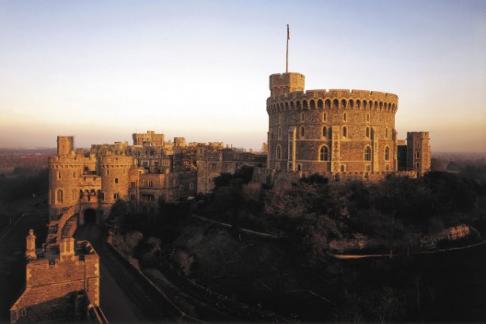Kostenlos
Unterstützung

New Itinerary : Opéra - Place Vendôme - Concorde Square - Champs-Elysées Avenue - Arch of Triumph - Eiffel Tower - Invalides - Orsay Museum - The Grand Louvre Museum - Notre-Dame Cathedral - Sorbonne - Pantheon Church - Saint-Germain-des-Prés - Place des Pyramides (bus terminal). Departures: Tour departs daily at 09:00, 10:30, 12:00 and 14:45 Duration: 1 Hours 45 Minutes approx. Pick Up/Drop Off Paris Vision, 214 rue de Rivoli, 75001, Paris Includes: Tour in a luxury, air-conditioned coach Recorded commentary with individual headphones Information: 4 departures a day 11 available languages Suited to clients (first time, return and short stay) looking for an overall glimpse or orientation Suitable to families. No stop during the tour.
How Does The Barcelona Pass Work? The Barcelona Pass works through a scan and barcode system and will become activated after first use at an attraction. The pass, in 2 or 3 day options, works on calendar day basis after first activation, so it’s best practice to start using your pass first thing in the morning to make full use of each day. The passes are valid at each attraction and tour included only once. Adult passes are for anyone over the age of 12 and child passes are for 4 - 12 year olds. Note; each child pass holder must be accompanied by an adult pass holder at all times. Benefits of The Barcelona Pass SAVE TIME with everything included in one pass SAVE MONEY as all your attraction entry costs are included in the pass SAVE STRESS with our simple-to-use sightseeing pass and free guidebook NO HASSLE of carrying around loose change Forget queueing to buy tickets to top Barcelona attractions, The Barcelona Pass acts as your ticket into every one of the 20+ attractions, museums and tours included – allowing you to easily budget for your sightseeing when in Barcelona. All customers collecting Passes must provide the following documentation to the house security staff: - Photo Identification (Passport or Driving License). - Credit Card used to purchase the Pass(es). Under no circumstances will any Passes be issued without the above documentation.
Titanic Belfast + SS Nomadic The self-guided tour takes approximately 1.30 - 2 hours. Guided tour of Nomadic is 30 minutes. Your ticket for the Nomadic is valid on the day of your Titanic Belfast visit and the following day. Crumlin Road Gaol We recommend that you arrive at least 10 - 15 minutes prior to the tour time, to enable tickets to be checked. There is also a small museum collection and gift shop on site which you may want to explore.
There’s a lot in life to celebrate. So welcome aboard! Whatever the occasion, you’ll enjoy gentle bay breezes, glittering waves, and the dramatic San Francisco skyline. Whether it’s your birthday, anniversary, or you finally found a great babysitter, join us for gracious hospitality and stunning views. Set against twinkling city lights and legendary vistas, experience includes an elegant four-course dinner, live music and dancing around the San Francisco Bay. DINNER MENU FIRST COURSE California Hornblower Wedge Salad maytag blue cheese dressing, smoked bacon, chopped eggs, tomatoes, scallions SECOND COURSE Fisherman’s Wharf Clam Chowder potatoes, celery, onions, fresh thyme, smoked bacon APPETIZER ENHANCEMENTS Charcuterie Plate - $18.00 chef’s selection of cured meat, house made terrine, flat bread crisps, cornichons, whole grain mustard Cowgirl Creamery Cheese Display - $16.00 assorted local cheeses, rustic flat breads, dried apricots, figs Seared Ahi Tuna - $18.00 wasabi aioli, wakame seaweed salad, crispy wonton chips ENTRÉE OPTIONS Grilled Salmon Filet soy ginger glaze, barley risotto roasted vegetables Mary’s Organic Pan Roasted Breast of Chicken roasted red bell pepper coulis, cannellini bean ragout bloomfield spinach Porcini Crusted Petit Filet Mignon porcini sauce, parmesan truffle mashed potatoes watsonville late harvest vegetables Balsamic Infused Portobello Mushroom asiago parmesan polenta cake grilled vegetables DESSERT OPTIONS Fresh Fruit Tart shortbread tart shell, vanilla pastry cream, apricot glaze Chocolate Truffle Cake raspberry sauce, fresh berries Chef de Cuisine Willie Fuentes Due to the seasonality of local fresh ingredients, all menus are subject to change.
Get a taste of life on the ocean waves, including the chance to take the ship's wheel and learn how to steer 963 tons of Victorian tea clipper through storms and high seas Learn the story of one of the most famous and magnificent ships in the world Take in epic views of the London skyline. Initially built for the China tea trade and launched in 1869, Cutty Sark’s original wooden planks and iron frames have been meticulously conserved. As part of an ambitious six-year conservation project, the ship was raised over three metres, giving visitors the unique opportunity to stand directly underneath this world wonder and see her elegant lines and ground-breaking design. It has now been developed into an award-winning museum and visitor experience. Located in the UNESCO World Heritage Site of Maritime Greenwich, the National Maritime Museum and the Queen’s House are both located within a short walking distance from Cutty Sark and are free to visit. The Royal Observatory is another must-see attraction when visiting Greenwich; it’s the home of Greenwich Mean Time and the Prime Meridian.
Inclusions: Glass of Champagne Driver/Guide Transport by limo to Woodbury Common Premium Outlets Bottled Water Snacks Exclusions Gratuities (Recommended)
